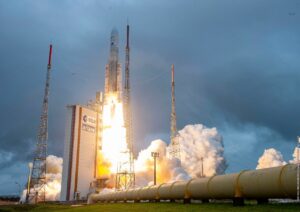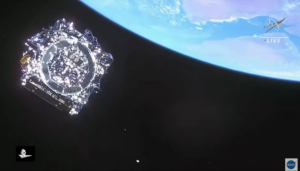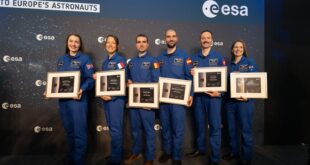
Paris/ Kourou, 25 December 2021. – Ariane 5 has launched the giant James Webb Telescope into its transfer orbit.
The Ariane 5 rocket lifted off from the Guiana Space Center, Europe’s spaceport in Kourou, French Guiana, on Christmas day, and the telescope separated successfully at an altitude of close to 1500 kilometers 27 minutes into the flight.
The most powerful space telescope ever built will be placed into orbit around the Lagrange 2 point – 1.5 million kilometers away from Earth – after a journey lasting approximately 29 days.
From its far outpost, Webb is to observe galaxies, planets, stars and even nebulae and help humankind and scientists to unravel the secrets of the Universe. The space agencies of the U.S., Europe and Canada teamed up to develop this telescope and powerful “time machine”.
Europe played an important role in this mission, with ESA providing the launch onboard Ariane 5, as well as the Nirspec spectrometer built by Airbus, the companies said. The astrophysics department of the Saclay-based CEA (French Alternative Energies and Atomic Energy Commission) and the Paris Observatory designed the MIRI camera.

The Webb Space Telescope will be hundred times more powerful than its predecessor Hubble and use improved and different technologies to capture 70% more light. Because of these innovations, astronomers will be able to make unprecedented observations that show the first stars and galaxies to be formed after the Big Bang, the space agencies and Ariane said.
“This latest success is undoubtedly one of the most iconic space exploration launches performed by Ariane 5,” said André-Hubert Roussel, CEO of ArianeGroup. “There are just five more Ariane 5 launches scheduled before this legendary launcher bows out. Everybody at ArianeGroup is fully committed to making Ariane 6, scheduled for a first launch from Kourou in 2022, Europe’s next great achievement in space.”





